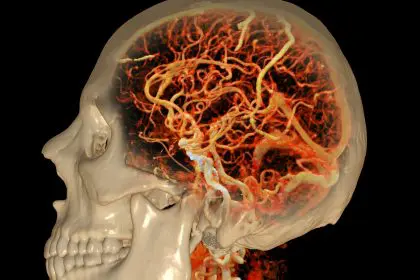Discovering blood in your stool can trigger immediate anxiety and concern, but understanding what this symptom means helps distinguish between minor issues and serious conditions requiring prompt medical attention. Blood in bowel movements appears in various forms and colors, each providing important clues about the location and potential cause of bleeding within your digestive system.
The appearance, amount, and accompanying symptoms of rectal bleeding offer valuable information about underlying conditions. While some causes resolve on their own or with simple treatments, others represent medical emergencies that demand immediate intervention to prevent serious complications.
Understanding the digestive system’s bleeding patterns
Blood that appears in stool originates somewhere along the digestive tract, from the mouth to the anus. The location of bleeding determines how the blood appears when it exits the body, creating distinct patterns that help identify potential causes.
Upper digestive tract bleeding, occurring in the stomach or small intestine, typically produces dark, tarry stools as blood undergoes chemical changes during its journey through the intestinal system. This type of bleeding often indicates more serious conditions that require immediate medical evaluation.
Lower digestive tract bleeding, originating in the colon, rectum, or anus, usually appears as bright red blood that may be mixed with stool, coat the outside of bowel movements, or appear separately in the toilet bowl. While often less immediately dangerous than upper tract bleeding, lower tract bleeding still requires proper evaluation and treatment.
Hemorrhoid-related bleeding patterns
The most common cause of rectal bleeding involves hemorrhoids, which are swollen blood vessels in the anal area that can rupture and bleed during bowel movements. This bleeding typically appears bright red and may be noticed on toilet paper, in the toilet bowl, or coating the outside of stool.
- Internal hemorrhoids cause painless bleeding that often appears as drops or streaks of bright red blood. The bleeding usually occurs during or immediately after bowel movements and may be accompanied by tissue protruding from the anus. This type of bleeding often resolves with dietary changes, increased fiber intake, and proper bathroom habits.
Hemorrhoidal bleeding tends to be intermittent, occurring primarily during periods of constipation or straining. The amount of blood is usually small, though it may appear alarming when it colors toilet water bright red. Despite its dramatic appearance, hemorrhoidal bleeding rarely causes significant blood loss or health complications.
Anal fissure bleeding characteristics
Small tears in the anal opening, called anal fissures, create another common source of rectal bleeding that produces distinct symptoms and appearance patterns.
- Anal fissures produce bright red bleeding with severe pain during and after bowel movements. Unlike hemorrhoidal bleeding, fissure-related bleeding is almost always accompanied by sharp, burning pain that can last for hours after bathroom visits. The blood typically appears on toilet paper or as small amounts coating stool.
These tears often develop from passing hard, large stools or from chronic diarrhea that irritates the anal opening. The bleeding usually stops between bowel movements but recurs with each bathroom visit until the fissure heals completely.
Inflammatory bowel condition bleeding
Several inflammatory conditions affecting the intestines produce characteristic bleeding patterns that differ significantly from hemorrhoidal or fissure-related bleeding.
- Inflammatory bowel conditions cause persistent bleeding mixed throughout stool along with other digestive symptoms. This bleeding may appear bright red or darker, depending on the location of inflammation within the intestinal tract. The blood is typically mixed with stool rather than appearing separately, and bleeding episodes occur regularly rather than just during bowel movements.
Additional symptoms often accompany this type of bleeding, including abdominal cramping, changes in bowel movement frequency, mucus in stool, and general feelings of illness or fatigue. The combination of persistent bleeding with these other symptoms distinguishes inflammatory conditions from simpler causes.
Polyp and growth-related bleeding
Growths within the colon or rectum can cause bleeding that varies in appearance depending on the size, location, and characteristics of the abnormal tissue.
- Intestinal polyps create intermittent bleeding that may be bright red or darker depending on their location within the digestive tract. Small polyps often cause minimal bleeding that may only be detected through specialized testing, while larger growths can produce noticeable blood in stool.
This type of bleeding often occurs without pain or other obvious symptoms, making it particularly concerning since it may indicate precancerous or cancerous changes. The irregular nature of polyp bleeding means it may disappear for weeks or months before recurring.
Diverticular bleeding patterns
Small pouches that form in the colon wall, called diverticula, can rupture and cause significant bleeding episodes with characteristic features.
- Diverticular bleeding produces sudden, large amounts of bright red blood that may fill the toilet bowl and cause noticeable weakness or dizziness. This type of bleeding often starts and stops abruptly, sometimes resolving completely after a single episode.
The dramatic nature of diverticular bleeding can be frightening, but many episodes stop on their own without intervention. However, the significant blood loss possible with this condition makes medical evaluation important even when bleeding stops spontaneously.
Infection-related bleeding symptoms
Various infections affecting the digestive tract can cause bleeding along with other distinctive symptoms that help identify infectious causes.
- Bacterial and parasitic infections cause bloody diarrhea with cramping and fever. This bleeding typically appears as streaks or clots mixed with loose, frequent stools. The combination of bleeding with diarrhea, abdominal pain, and systemic symptoms like fever distinguishes infectious causes from other bleeding sources.
Food poisoning and traveler’s diarrhea often present with this pattern of bleeding, along with rapid onset of symptoms following exposure to contaminated food or water. The bleeding usually resolves as the infection clears but may require specific treatments depending on the causative organism.
Medication-induced bleeding effects
Certain medications can increase bleeding risk or directly cause intestinal bleeding, creating patterns that may mimic other conditions.
- Blood-thinning medications amplify bleeding from minor sources like small hemorrhoids or fissures, making normally minimal bleeding appear more severe. The bleeding appears similar to its underlying cause but occurs more frequently and in larger amounts than typically expected.
Anti-inflammatory medications can irritate the stomach and intestinal lining, potentially causing bleeding that appears as dark, tarry stools or bright red blood depending on the location of irritation. This medication-related bleeding often improves when the problematic medication is discontinued or the dose is adjusted.
Serious conditions requiring immediate attention
Several conditions that cause bloody stools represent medical emergencies requiring immediate evaluation and treatment.
- Severe internal bleeding causes dark, tarry stools with weakness and dizziness, indicating significant blood loss from the upper digestive tract. This type of bleeding often results from stomach ulcers, torn blood vessels, or other serious conditions that can rapidly become life-threatening without prompt treatment.
The dark color results from blood being digested as it travels through the intestinal system, creating a distinctive tar-like appearance that differs dramatically from bright red rectal bleeding. This finding, especially when accompanied by symptoms like rapid heart rate, weakness, or fainting, requires emergency medical care.
Accompanying symptoms that increase concern
Certain symptoms that occur alongside bloody stools indicate more serious underlying conditions and increase the urgency for medical evaluation.
Severe abdominal pain combined with rectal bleeding may indicate intestinal obstruction, perforation, or other surgical emergencies. The pain is typically intense and constant rather than crampy or intermittent.
Fever accompanying bloody stools suggests infection or inflammation that may require specific treatments. High fevers with significant bleeding can indicate serious systemic infections that need immediate antibiotic treatment.
Rapid heart rate, dizziness, or fainting combined with any amount of rectal bleeding indicates significant blood loss that may require emergency intervention. These symptoms suggest the bleeding is causing measurable effects on circulation and blood pressure.
Color variations and their significance
The appearance of blood in stool provides important diagnostic clues about the location and severity of bleeding within the digestive system.
Bright red blood typically originates from the lower colon, rectum, or anus and often indicates less immediately serious conditions. However, large amounts of bright red blood can still represent significant bleeding requiring prompt evaluation.
Dark red or maroon-colored blood usually comes from the middle portions of the colon and may indicate more serious conditions than bright red bleeding from the anal area.
Black, tarry stools almost always indicate bleeding from the upper digestive tract and require immediate medical attention due to the serious conditions that typically cause this type of bleeding.
Amount of bleeding and risk assessment
The quantity of blood visible in stool helps assess the urgency of the situation and potential underlying causes.
Small amounts of blood, such as streaks on toilet paper or slight discoloration of stool, often indicate minor conditions like hemorrhoids or small fissures. While these should be evaluated, they rarely represent immediate emergencies.
Moderate bleeding that colors toilet water or appears as clots mixed with stool suggests more significant sources that require timely medical evaluation, even if not immediately life-threatening.
Large amounts of bleeding that fill the toilet bowl or cause symptoms like weakness and dizziness indicate potentially serious conditions requiring immediate medical attention.
When bleeding requires emergency care
Several situations involving bloody stools demand immediate medical evaluation rather than waiting for routine appointments.
Continuous bleeding that doesn’t stop after several hours, especially when accompanied by weakness, dizziness, or rapid heart rate, may indicate severe blood loss requiring emergency intervention.
Bleeding combined with severe abdominal pain, high fever, or vomiting suggests serious conditions like intestinal obstruction, perforation, or severe infection that need immediate treatment.
First-time bleeding episodes in people over age 50, especially when accompanied by changes in bowel habits or unexplained weight loss, require prompt evaluation to rule out serious conditions like cancer.
Recovery and monitoring considerations
After bloody stools occur, monitoring for recurrence and associated symptoms helps determine whether the underlying cause is resolving or requires ongoing treatment.
Keeping track of bleeding episodes, including their frequency, amount, and appearance, provides valuable information for medical evaluation. This documentation helps identify patterns that may point to specific causes.
Noting accompanying symptoms like pain, changes in bowel habits, or systemic symptoms helps create a complete picture of the condition and guides appropriate treatment decisions.
Understanding what bloody stools mean empowers individuals to make appropriate decisions about when to seek medical care and what information to provide during medical evaluations. While many causes of rectal bleeding are minor and treatable, recognizing the warning signs of serious conditions ensures timely intervention when needed to protect health and prevent complications.

















